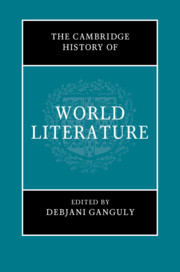Book contents
- The Cambridge History of World Literature
- The Cambridge History of World Literature
- Copyright page
- Contents
- Figures
- Contributors
- Acknowledgements
- Introduction
- Part I Genealogies
- Part II Thinking the World
- Part III Transregional Worlding
- Part IV Cartographic Shifts
- Part V World Literature and Translation
- Part VI Poetics, Genre, Intermediality
- 31 Poetry, (Un)Translatability, and World Literature
- 32 The Reinvention of the Novel in Africa
- 33 The Return of Realism in the World Novel
- 34 The Graphic Novel as an Intermedial Form
- 35 World Children’s Literature
- Part VII Scales, Polysystems, Canons
- Part VIII Modes of Reading and Circulation
- Part IX The Worldly and the Planetary
- Index
- References
35 - World Children’s Literature
from Part VI - Poetics, Genre, Intermediality
Published online by Cambridge University Press: 17 August 2021
- The Cambridge History of World Literature
- The Cambridge History of World Literature
- Copyright page
- Contents
- Figures
- Contributors
- Acknowledgements
- Introduction
- Part I Genealogies
- Part II Thinking the World
- Part III Transregional Worlding
- Part IV Cartographic Shifts
- Part V World Literature and Translation
- Part VI Poetics, Genre, Intermediality
- 31 Poetry, (Un)Translatability, and World Literature
- 32 The Reinvention of the Novel in Africa
- 33 The Return of Realism in the World Novel
- 34 The Graphic Novel as an Intermedial Form
- 35 World Children’s Literature
- Part VII Scales, Polysystems, Canons
- Part VIII Modes of Reading and Circulation
- Part IX The Worldly and the Planetary
- Index
- References
Summary
World children’s literature can be understood as a modern, transnational discursive space that formed in the late nineteenth century. Specific aspects of how this historical moment evolved internationally are explored in more detail using in particular the German, Japanese, and Anglo-American cases as examples. That we can now regard children’s literature as a cross-cultural genre characterized by widely shared notions of appropriate content or intended readership is a result that emerged from a complex, entangled set of historical and political circumstances. The first section of the essay sets the stage by tracing the historical growth of childhood as a scientific and cultural concept; the importance of this newly defined childhood to modern nation building efforts, especially as manifested in the centralization of schooling; the rise of mass media, including that tailored to children; and finally, the gradual creation of a literate child and youth population that developed its own reading culture. The next section explores the connection between education and children’s literature in more detail: it was the transnational pedagogical debate about children’s literature in the school curriculum at the end of the nineteenth century that led the genre to assume a central role in creating future citizens and imagined communities. A third section details the international boom in more popular, entertainment-oriented children’s literature around the fin de siècle, which demonstrates from an alternate perspective how the ideological goals of adults shaped -- and were shaped by -- children’s imagination of the world. The essay concludes with a reflection on how world children’s literature has continued to grow as a complex, uneven system of international exchange powered by a distinctive and paradoxical mix of didacticism and idealism on the one hand – and generosity and adaptability on the other.
- Type
- Chapter
- Information
- The Cambridge History of World Literature , pp. 668 - 690Publisher: Cambridge University PressPrint publication year: 2021



